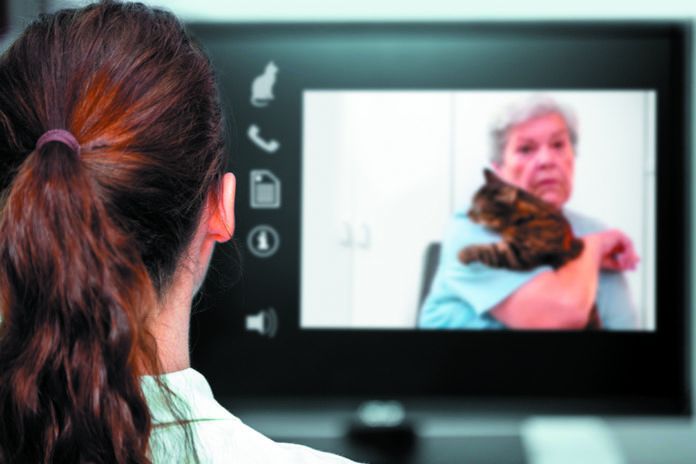Back in December 2019, before anyone had ever heard the term “social distancing,” telemedicine remained largely at the margins of veterinary care. The concept of providing medical services to a pet without an in-person visit was out there, to be sure. The American Veterinary Medical Association even had guidelines for the use of such technology as video-conferencing to insure that cats seen on a screen rather than at the vet’s office received the best care possible. But most veterinary visits for cats took place at the doctor’s office. A survey published in the journal BMC Veterinary Research late last year even showed that many veterinarians did not know the definitions of some of the basic terms associated with virtual veterinary care.
How times have changed. Veterinary consultations from afar have jumped 170 percent by one measure. And VCA Animal Hospitals, in 46 states and five Canadian provinces, launched video consultations in the spring, while use of its mobile app on-call service overseen by a team of veterinarians more than doubled.
Even the U.S. Food and Drug Administration has become involved, relaxing the requirements of virtual care “in order to allow veterinarians to better utilize telemedicine to address animal health needs during the pandemic.” For example, a vet can prescribe drugs that she wouldn’t have been able to prescribe previously without seeing a cat in person.
The ASPCA has weighed in, too. “Veterinarians should fully leverage…expansive opportunities to employ telemedicine to help animals and limit the risk to public health during the pandemic,” the organization says.
But how well do virtual vet visits actually work? Are they here to stay?
The benefits and limitations of veterinary visits from afar
One plus of virtual visits for cats is that it might get them “seen” by veterinarians more often. “Many cats are not socialized to enjoy outings and, therefore, clients hesitate to bring them out of the home unless absolutely necessary,” says Pam Bendock, VMD, of Boston’s Back Bay Veterinary Clinic. “A number of people would be more willing to “take” their pet to the doctor if “taking” didn’t mean coaxing them into a cat carrier.”
Dr. Bendock also points out that “telemedicine allows a veterinarian a window into the patient’s life in her own home, where behaviors are more natural and symptoms and physical presentation may be captured in photos and video, and in real time. Often, when pets come to the vet,” the doctor points out, “they are overcome by stress and ‘forget’ their pain. When we connect virtually, we can see how they are acting in the home environment without stress or fear.”
Virtual veterinary visits can also be quite useful for recheck examinations, say, to assess how a cat is doing after an illness or operation, and also for consultations on behavior, nutrition, and care of new kittens. In addition, a client can move aside a cat’s hair to show the doctor an unusual bump or lump and see to what degree the vet can make heads or tails of it without actually palpating (feeling) it.
Of course, Dr. Bendock says, “nothing can replace the hands-on nose-to-tail examination that comes with a physical exam.” Nor can a veterinarian deliver vaccinations virtually or perform a number of other procedures without being physically together with a cat. These include aspirating cells to check for cancer, dental work, and a host of other things. But, she adds, the positives have been significant enough that she says her practice “is excited to continue offering this modality as a convenient method to help provide care for our patients not only during times like this, but ongoing.”
Especially for particularly skittish cats, it’s something to think about.




